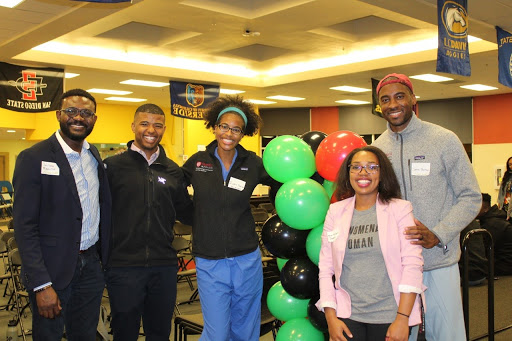In the United States, only 5% of doctors are African American, and the number of black doctors from low-income communities is even lower.
Jacqueline Diep, a University of Southern California graduate who grew up in the Bay Area, is determined to change that. Her initiative, the Big Homie Project, works with the Boys and Girls Club to show students from low-income backgrounds that they can achieve their dreams of becoming doctors.
“These kids really want to be a part of medicine,” she said. “But you don’t find many surgeons or doctors who come out of East Palo Alto.”
Through the Big Homie Project, she pairs high school students with Stanford surgeons who help them with things like college and career advice.
Diep shared the story of Mikayla, a high school senior from East Palo Alto, and Stanford general surgery resident Auriel August.
“I knew the kind of impact Auriel would be able to have on [Mikayla] as a strong, determined, resilient black woman in medicine,” Diep said. “That’s exactly what she did.”
Through Auriel’s mentorship, Diep said, Mikayla expanded her interests and is achieving beyond what she believed was possible. So far, she has been accepted into two colleges and developed a newfound love for indoor rock climbing.
“We wanted to shed some light on what black excellence can be,” Diep said.
Diep, who lived in foster care before becoming emancipated at age 11, believes that mentors have an immense power to transform students’ lives.
“I had a large support system,” she said. “Mentors, teachers and people who really cared about guiding me in the right direction. They helped to build my confidence and encouraged me to believe in the impossible. If you don’t have these kinds of relationships, it’s hard to feel empowered to achieve in life.”
In particular, Diep believes that it’s critical for students to have mentors who look like them, especially in fields like medicine where there is still much potential for improvement in terms of diversity.
Beyond the Big Homie Project, Diep wants to give East Palo Alto students a chance to see African American doctors take the spotlight, which is why she pioneered a panel in February for Black History Month. In collaboration with the Boys and Girls Club, the event was meant to bridge the gap between Stanford professionals of color and high school students. Stanford professionals across fields including medicine, athletics and technology were given the chance to speak on a panel and engage with students from the East Palo Alto area.
“There are a handful of really amazing doctors, surgeons, and pediatricians of color, who kind of shy away from the spotlight,” Diep said. “This [event] was a great opportunity to show that they are invested in East Palo Alto, a community that a lot of people forget about.”
At the event, students and Stanford professionals were given the opportunity to listen to speakers in various fields, and were then placed in groups. Wilson Alobuia M.S. ’21, a general surgery resident at Stanford who is originally from Ghana, said the groups were given tasks to perform, such as making Tik Toks or naming popular African American leaders.
“I thought it was very special because it helped the students see us surgeons and doctors as people whom they could approach and get advice from,” Alobuia said.
The event was so powerful, he added, because it was one of the few times where he was able to be in a room full of other professionals who looked like him.
“I told people that I felt like this event helped me reset my mind,” he said. “It was because seeing the fire in the [students’] eyes really inspired me. I was also excited to be able to be with people who looked like me, in many different fields such as medicine, tech and athletics. I even got the chance to meet someone who had founded a magazine dedicated to highlighting the accomplishments of the black community. Seeing all of these people helped me reconnect with my identity.”
Malcolm DeBaun M.D. ’15, a resident in orthopedic surgery at Stanford, is supportive of Diep’s efforts because he believes mentorship is critical for the future of the medical field.
“Diversity is important and specifically for medicine, it’s important to train a diverse set of individuals to care for the population,” he said. “As a patient, you want a culturally competent doctor who is able to acknowledge your perspective.”
Alobuia agreed with DeBaun, saying that patient outcomes can be greatly improved when they are taken care of by doctors who look like them.
“I can’t tell you the number of times where I walk into a patient’s room, and they are African American,” Alobuia said. “Just because they see me, they lighten up. They say, ‘Are you a doctor? Wow that’s so cool!’”
Knowing that there’s someone who looks like them on their care team helps patients to feel more at ease, which Alobuia believes leads to better health outcomes and more doctor-patient transparency. A recent study, which was focused on the mortality gap between black and white patients, found that by increasing the number of black doctors in the workforce, the mortality gap between black and white patients could be reduced by 8%.
In the future, Diep hopes to see more students from East Palo Alto achieving their goals and realizing that anything is possible with the right resources.
“Unfortunately, there are a lot of kids who don’t make it out of East Palo Alto,” she said. “I’m determined to figure out how to change this narrative.”
Contact Sophia Nesamoney at nsophia ‘at’ stanford.edu.
